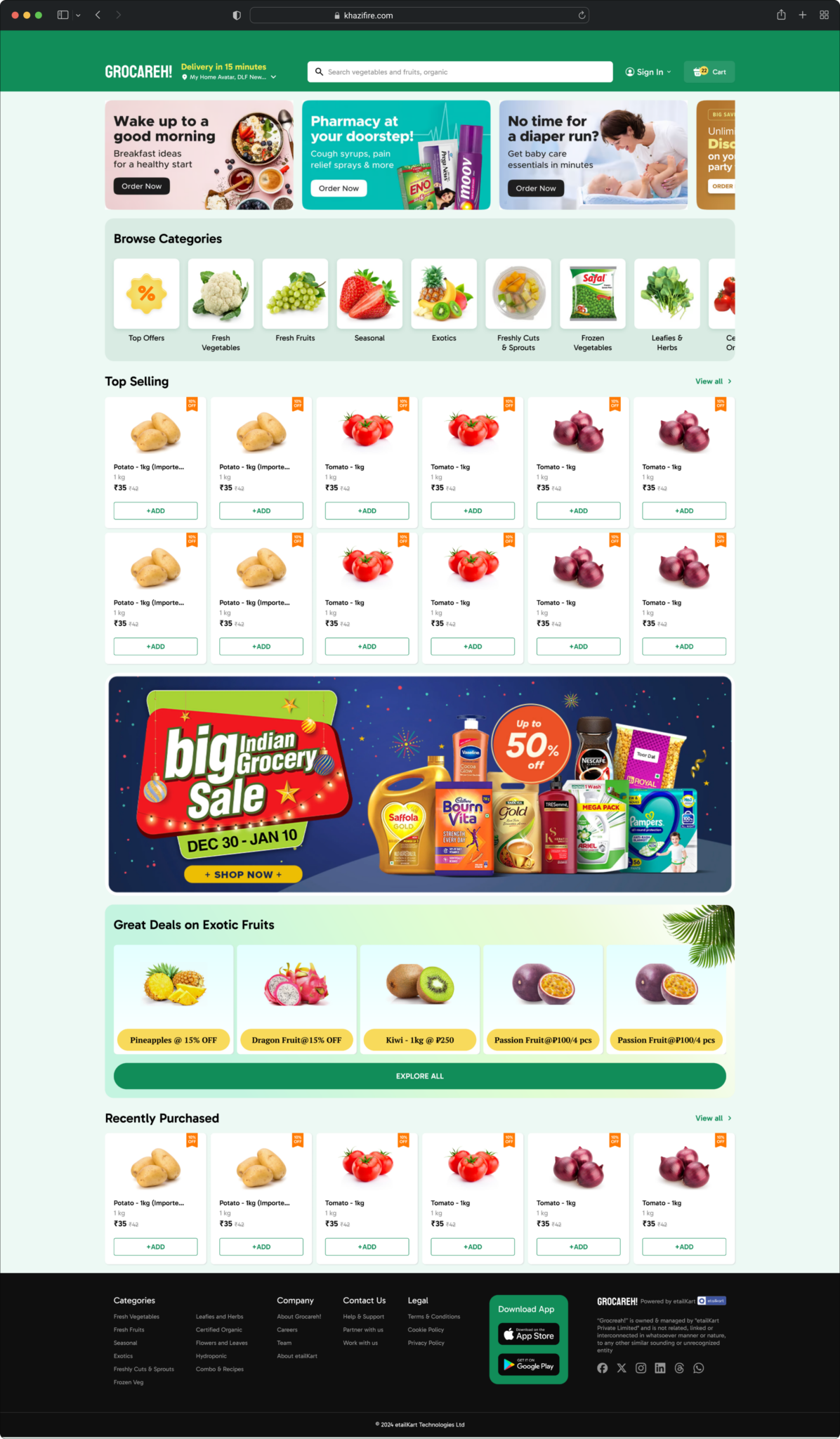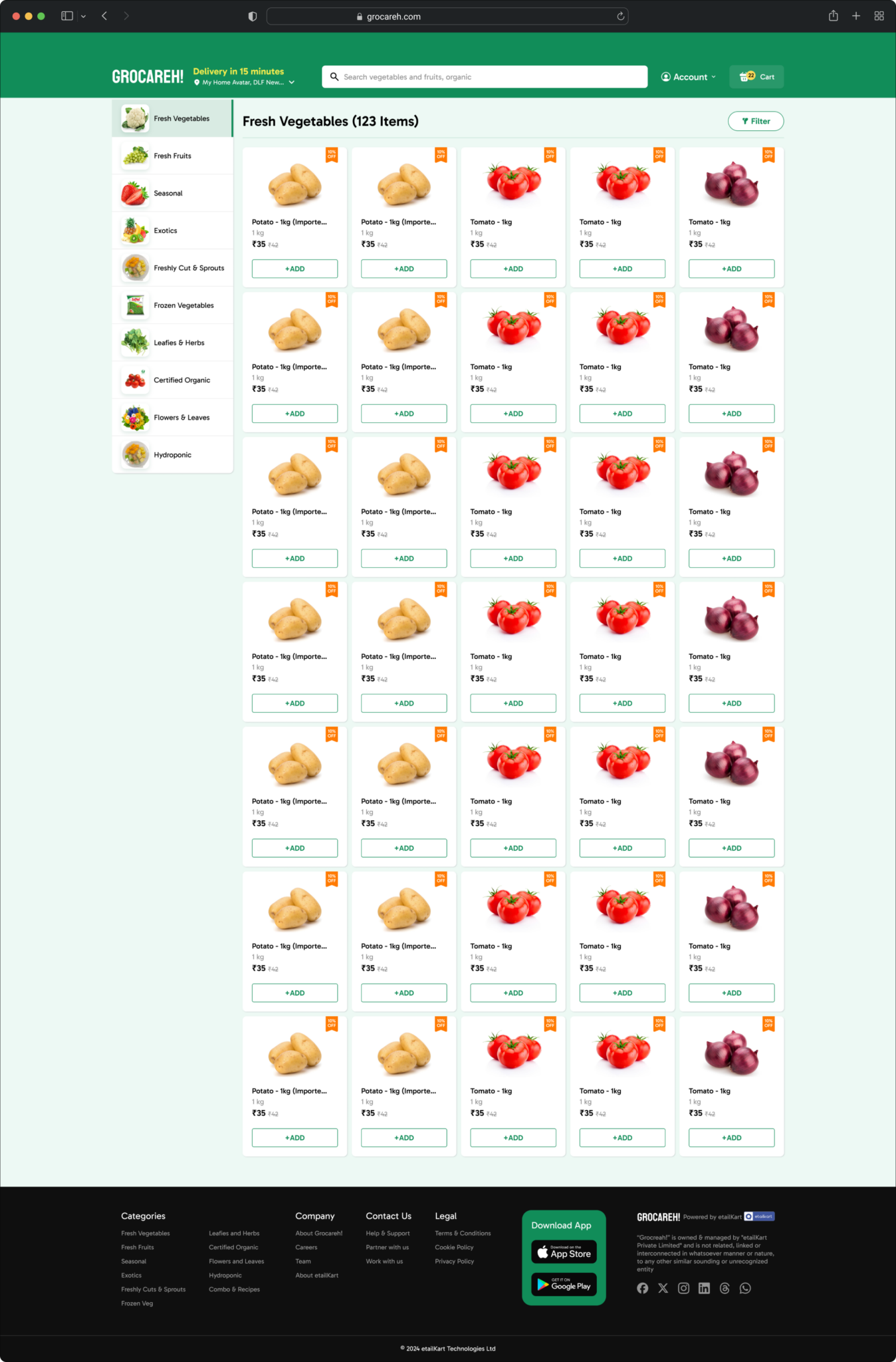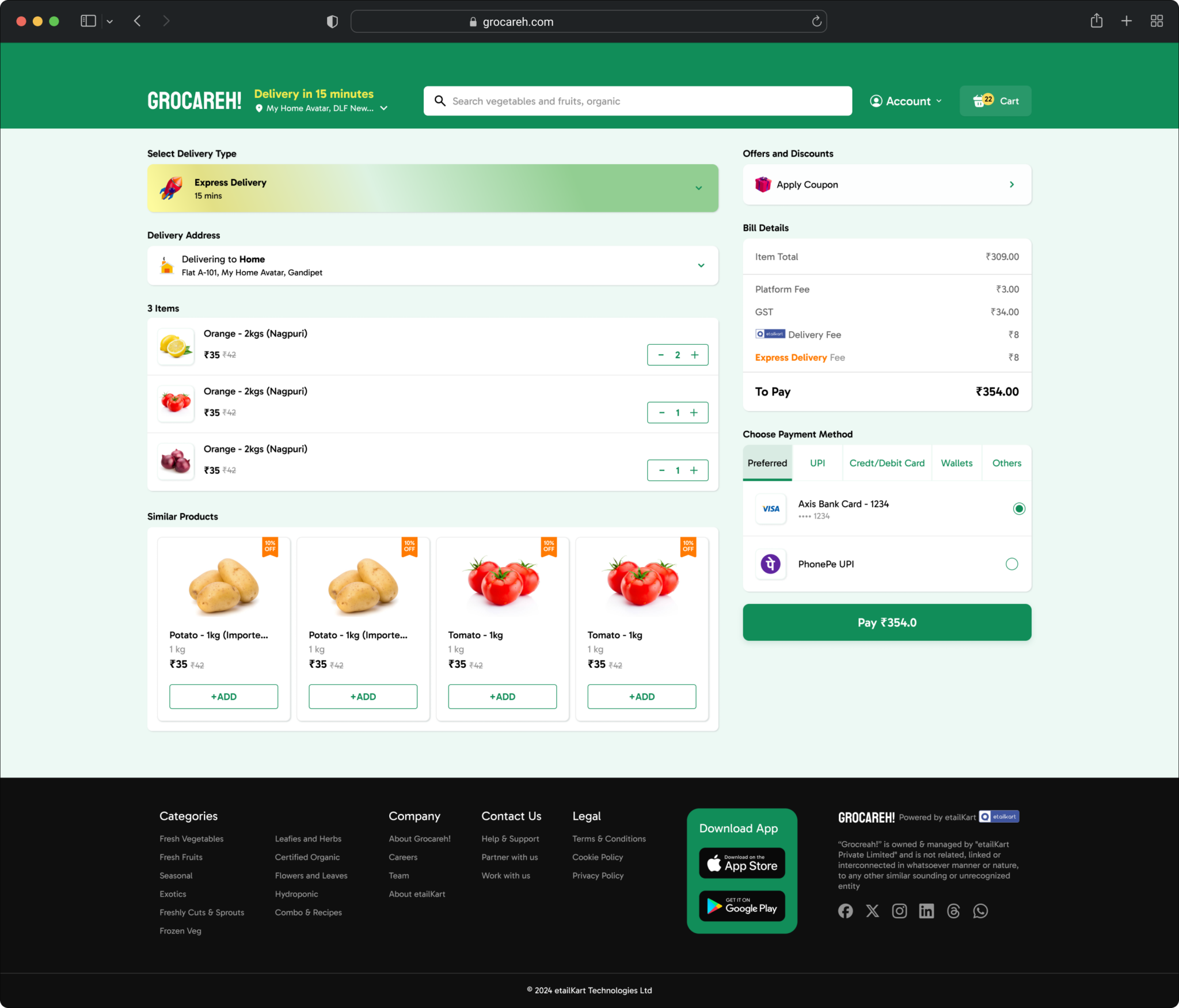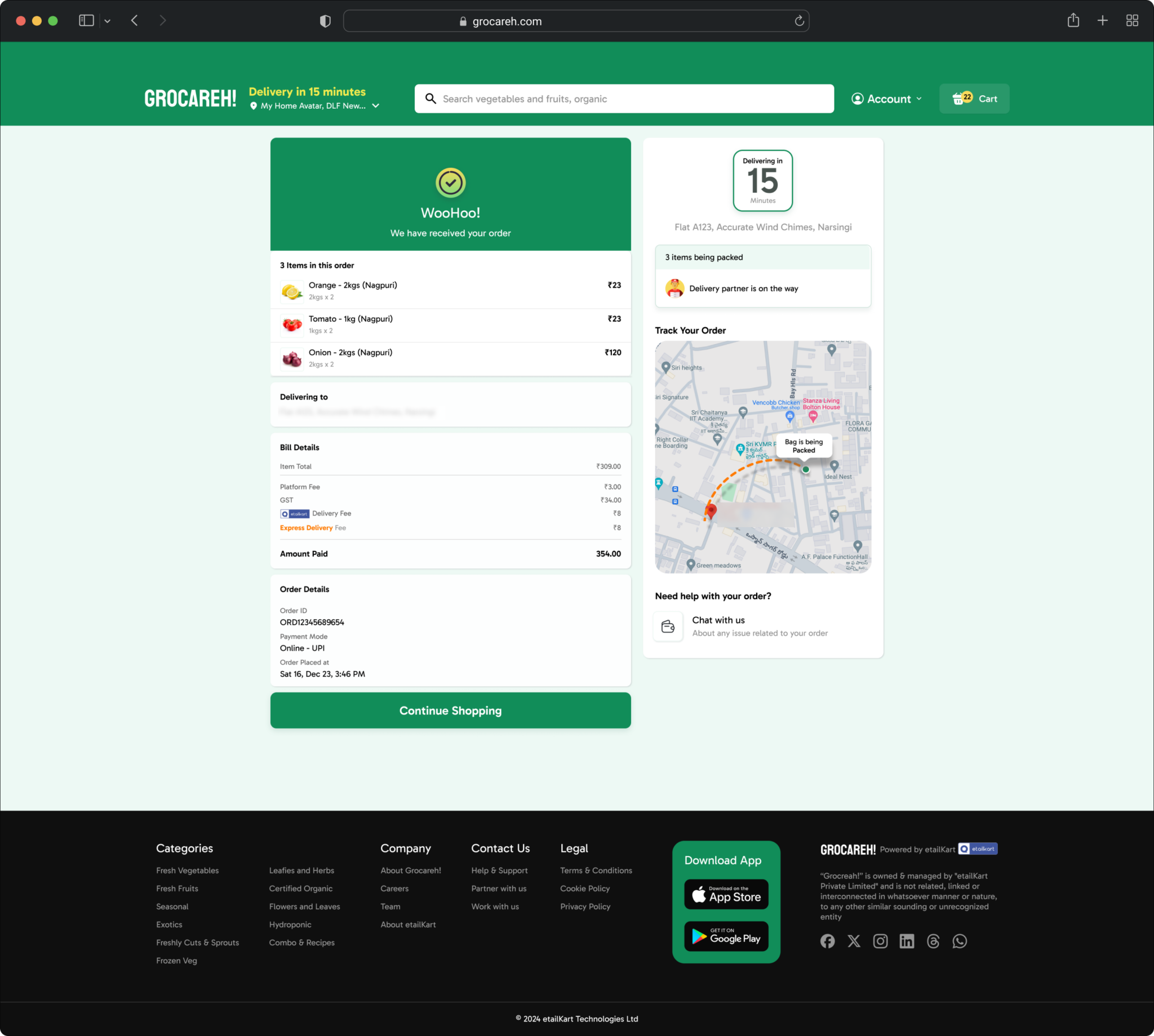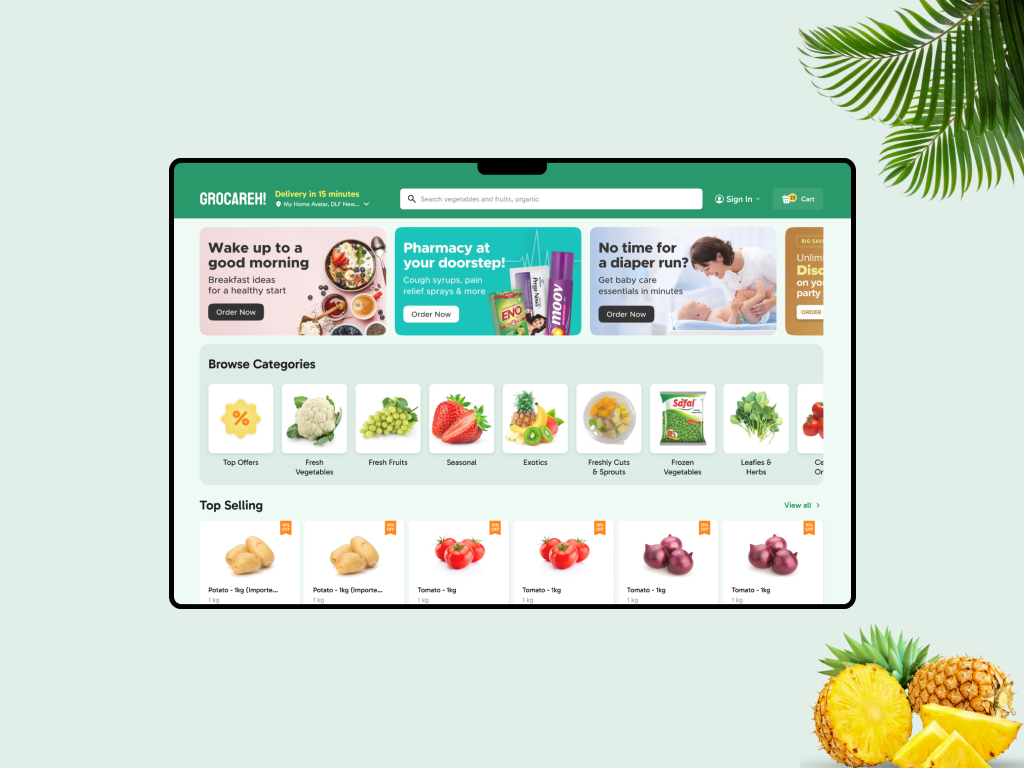Problem
Small-scale businesses like vegetable markets often struggle to adapt to the digital marketplace due to high setup costs and lack of technical expertise.
Additionally, established players like Swiggy Instamart, Blinkit, and Zepto maintain their own storehouses, making it difficult for local vendors to find space in the online market. High running costs for maintaining an online presence further add to the challenges faced by small-scale sellers. This limits their ability to compete with larger players, leaving a gap in the market for affordable and easy-to-use eCommerce solutions.
Research Insight
80% primarily use mobile phones for online shopping
50% of users engage with eCommerce apps weekly
80% Sellers lack technical know-how to go online
Dependency on third-party platforms with high commission rates, reducing profitability
Big players, operate their own warehouses, offering faster delivery but excluding small sellers.
Amazon Fresh and BigBasket partnership model is complex and costly to operate
Goal
Design a low-cost, user-friendly web and hybrid app platform that enables small vendors to:
Showcase and sell their products online.
Offer faster delivery options to urban customers.
Maintain a fresh, organic, and healthy brand identity.
Design
The design process for Grocareh! was rooted in creating an intuitive and accessible experience for both vendors and customers. The visual identity adopted a green color palette to symbolize freshness, organic produce, and health. A clean and minimalist UI was designed to emphasize simplicity and efficiency.
The information architecture was streamlined to enable faster product discovery and included filters for categories like vegetables, fruits, and organic goods. Special focus was given to the checkout process, ensuring a seamless and fast experience to reduce cart abandonment.
A mobile-first approach was taken considering 80% of users shop via mobile devices, leading to the development of a responsive website and hybrid app model. Lightweight design principles were applied to optimize load times, and clickable prototypes were created for usability testing and feedback gathering.
Key features such as quick onboarding, smart inventory management, and delivery scheduling were integrated to further enhance user experience.
Mobile App Experience
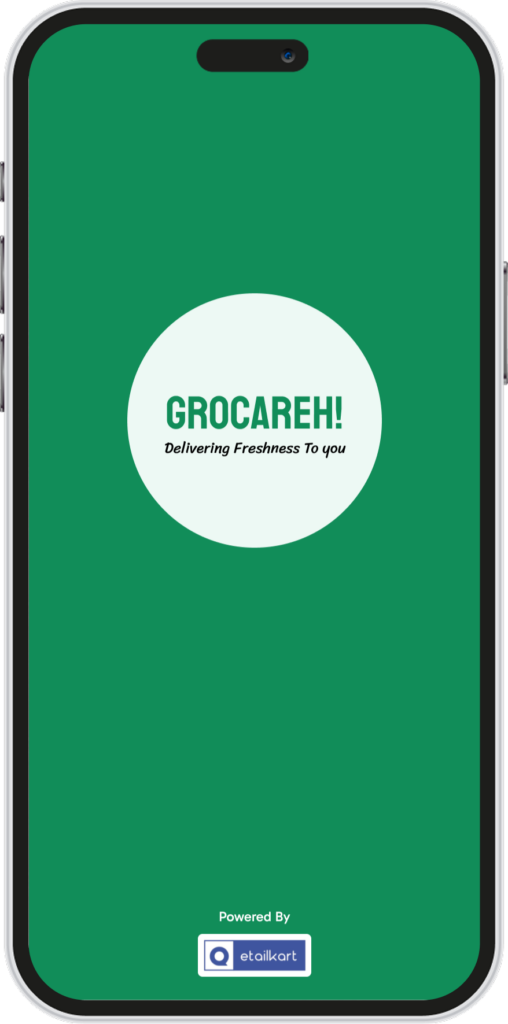
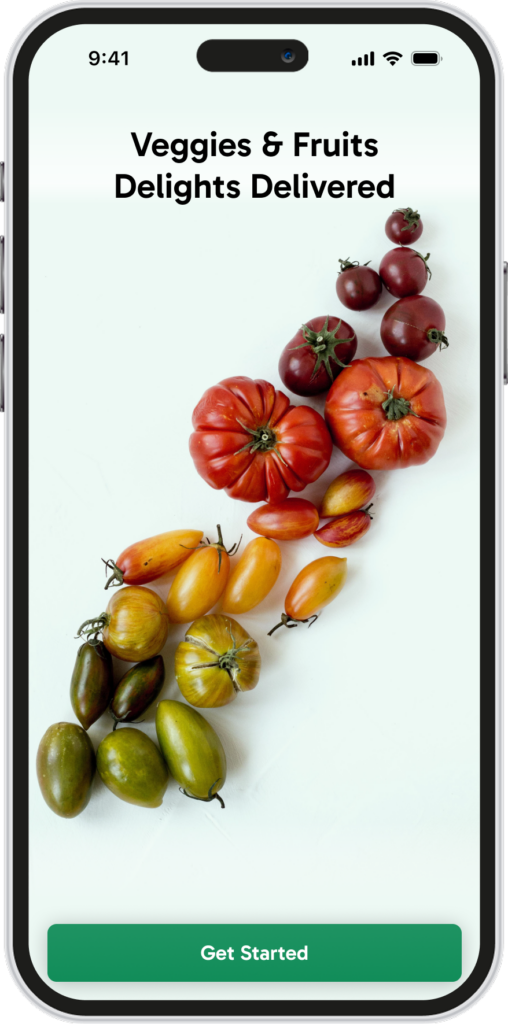
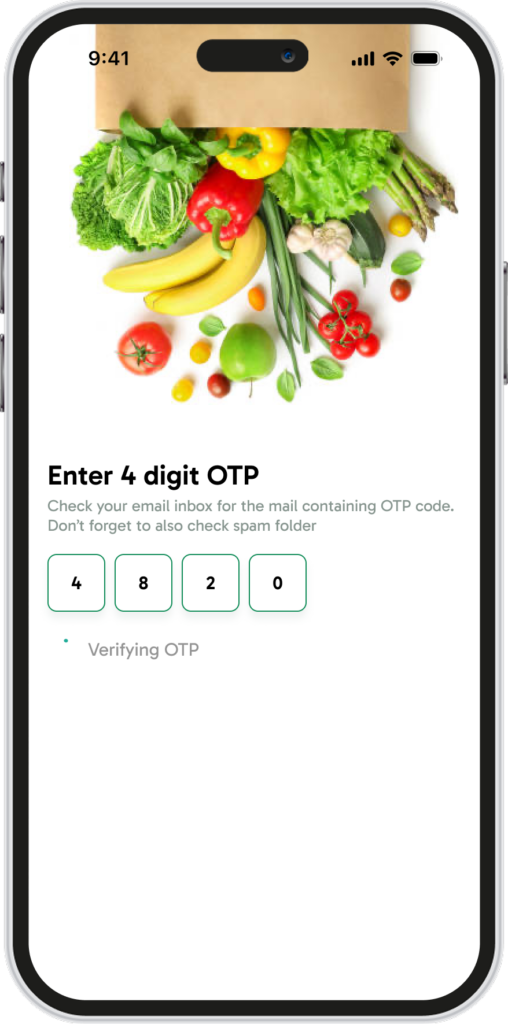
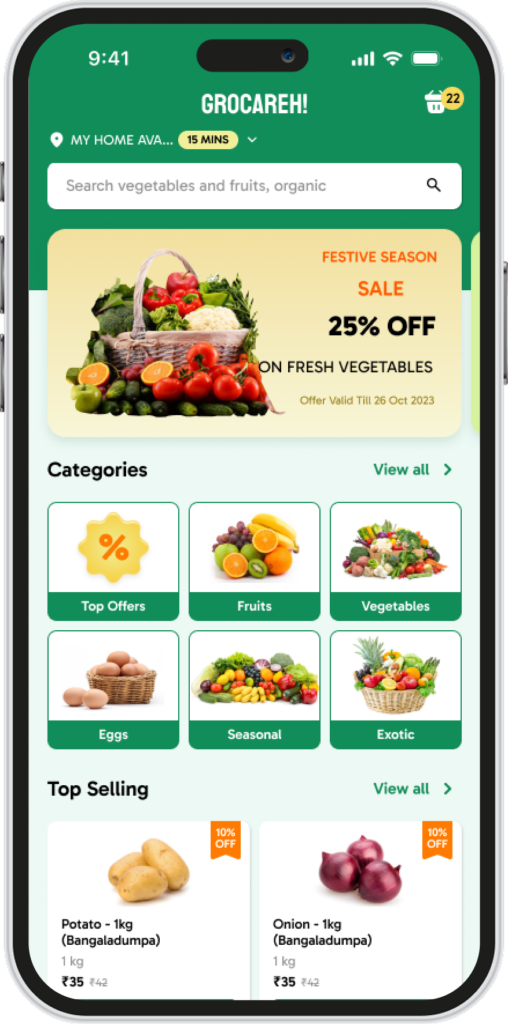
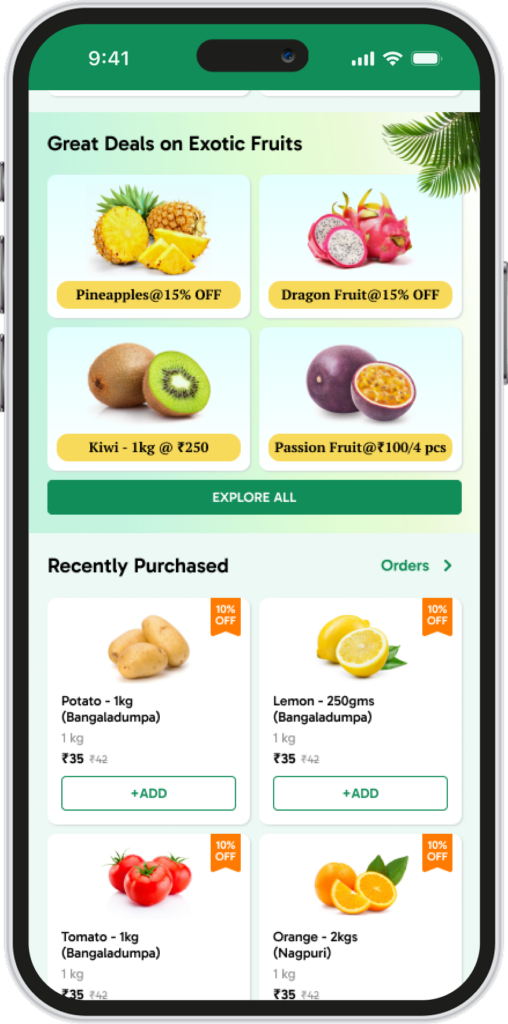
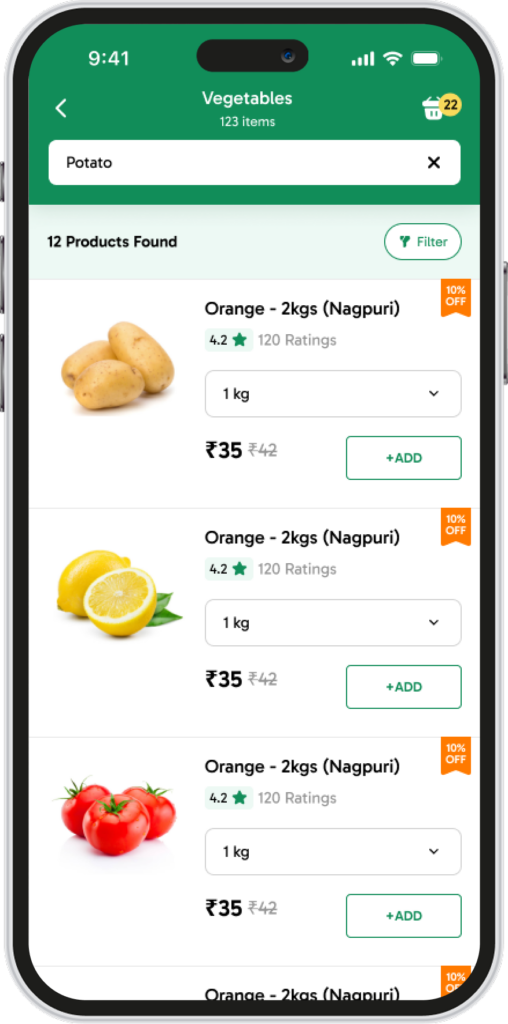
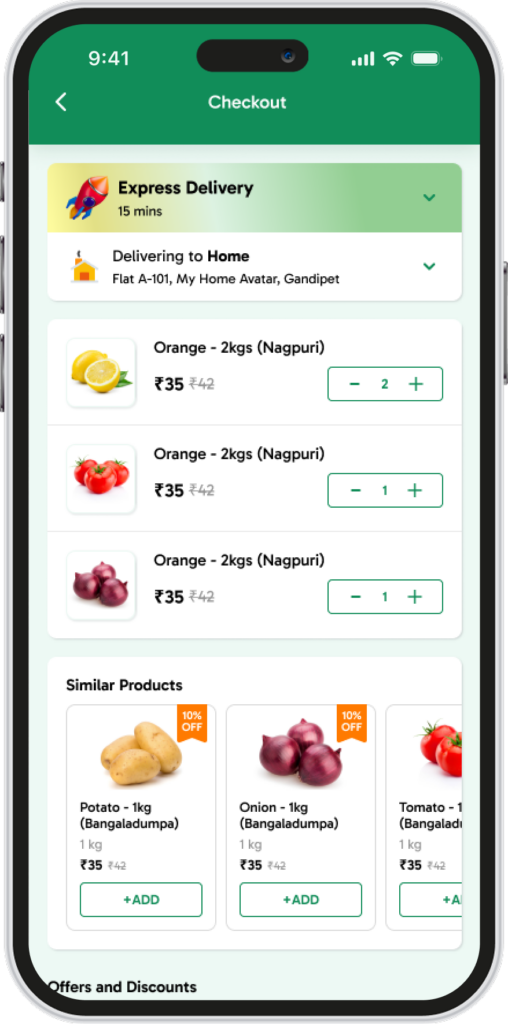

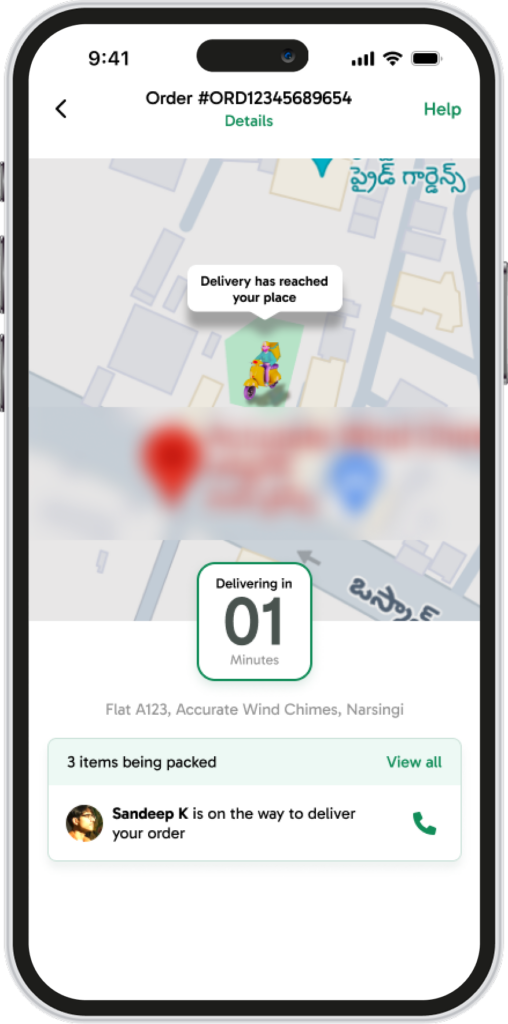
Website Experience
